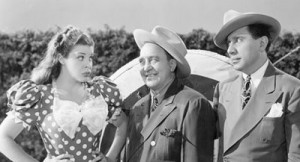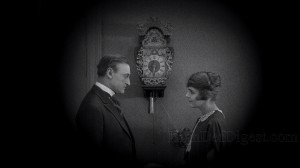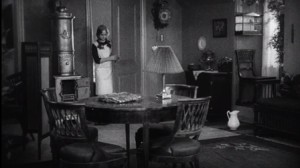From the Chicago Reader (January 21, 2005). — J.R.

Rarely shown in the U.S. these days, this 1941 film of the wildly deconstructive stage farce with Ole Olsen and Chic Johnson is still regarded as a classic in Europe, and it lives up to its reputation. The credit sequence establishes the wartime mood with its vision of hell as a munitions factory (where demons preside over the packaging of Canned Guy and Canned Gal), which is shortly revealed as a movie soundstage, the first of many metafictional gags. Very belatedly the movie gets around to telling a spare musical-comedy story (with swell numbers by Martha Raye and the jazz duo of Slim Gaillard and “Slam” Stewart, and some very acrobatic jitterbugging), but the main bill of fare is manic nonsense that almost makes the Marx Brothers look sober. H.C. Potter directed; with Mischa Auer, Shemp Howard, and Elisha Cook Jr. 84 min. Sun 1/23, 7 PM, Univ. of Chicago Doc Films.

Read more
I am reprinting the entirety of my first and most ambitious book (Moving Places: A Life at the Movies, New York: Harper & Row, 1980) in its second edition (Berkeley: University of California Press, 1995) on this site in eleven installments. This is the eighth.
Note: The book can be purchased on Amazon here, and accessed online in its entirety here. — J.R.
4—
Rocky Horror Playtime Vs. Shopping Mall Home
Seven weeks ago, when I received a call from Adriano Aprà in Rome inviting me to speak at this conference, I was in my hometown, Florence, Alabama, where my parents live today.[1] I have moved with all my belongings seventeen times in the past twenty years, and I will have to find and move to yet another place in New York as soon as I return from this conference. Nevertheless, I consider myself unusually fortunate, fortunate not only in being here—in this city and this country for the first time in my life—but in having a hometown to return to year after year: a fixed reference point. And fortunate in being the grandson of the man who ran most of the local movie theaters when I was growing up, which meant that I had virtually unlimited access to most of what was shown. Read more
From the Chicago Reader (April 1, 1990). Thanks to the interview with Casper Tybjerg on Criterion’s new dual-format release, I’m no longer sure if this was Dreyer’s “first substantial commercial release outside Scandinavia,” because Michael, made just before in Germany, also reportedly made a considerable splash. — J.R.

Formally and politically decades ahead of its time, Carl Dreyer’s wonderful silent Danish comedy (1925), his first substantial commercial success outside Scandinavia, recounts what happens when a working-class wife and mother, prompted by an elderly nurse, walks out on her tyrannical and demanding husband, who then has to fend for himself. Restricted mainly to interiors, Dreyer’s masterful mise en scene works wonders with the domestic space, and his script and dialogue make the most of his feminist theme. 110 min. (JR)

***


It’s all a matter of exquisite balance — between one shot and the next, between the first half of the film and the second half, between screen left and screen right.
Criterion’s dual-format edition of Carl Dreyer’s 1925 Master of the House scores as a modern film because Dreyer always knows how to modulate all his characters, and his actors’ beautiful performances, even when they’re at their most archetypal, whether in domestic tableaux or in climactic close-ups. Read more




